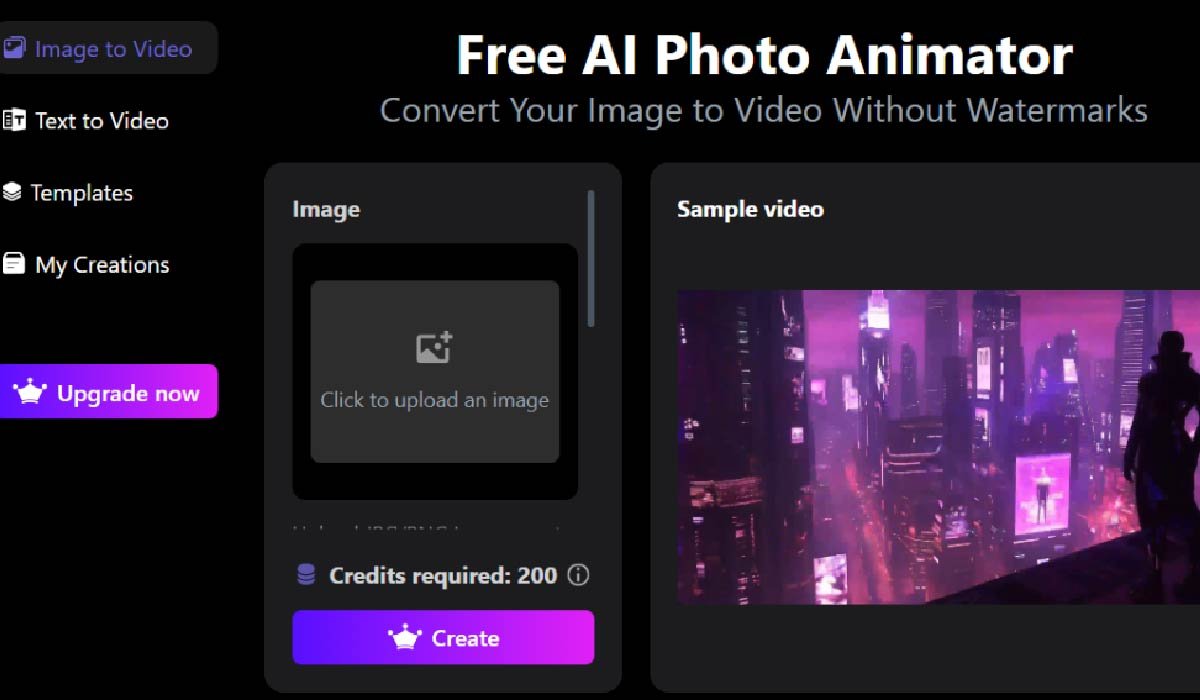Technology
The Technology Behind Dreamlux’s Image-to-Video AI: How It Works

In the ever-evolving world of artificial intelligence, Dreamlux Image-to-Video AI stands out as a powerful tool that converts static images into dynamic videos. Whether you’re creating content for social media, advertisements, or personal projects, the ability to animate still images has never been easier. But what exactly makes Dreamlux’s Image To Video AI Free Without Watermark technology so effective? Let’s dive into the intricate workings behind this innovative tool.
What is Dreamlux’s Image-to-Video AI?
Dreamlux’s Image-to-Video AI is designed to transform still images into animated videos by utilizing advanced AI algorithms. By analyzing the structure, depth, and key elements within an image, the tool can apply motion, transitions, and effects to bring that image to life. It’s ideal for users who need high-quality videos quickly and without any advanced video editing skills.
This is where Dreamlux’s AI technology comes into play. The platform uses deep learning, computer vision, and neural networks to analyze and animate images automatically. Unlike traditional video editing, which requires manual intervention for every transition and effect, Dreamlux’s AI automates this process, making it easier for creators to generate engaging videos.
The Role of AI in Image-to-Video Conversion
At the heart of Dreamlux’s image-to-video technology lies Artificial Intelligence (AI). AI allows Dreamlux to understand and analyze an image beyond just its pixels. Here’s how AI plays a critical role in this process:
1. Image Analysis
The first step in the AI-powered conversion process is to analyze the image. Dreamlux’s AI scans the image and detects key elements like shapes, faces, objects, and backgrounds. It evaluates these elements for their spatial relationships and depth, which are crucial for animating the image later. This step allows Dreamlux to understand the context of the image and ensure that the animation is coherent with the image’s content.
2. Motion Prediction
Once the image has been analyzed, Dreamlux’s AI begins the process of generating motion. Based on its understanding of the image’s layout, it predicts how certain elements should move. For example, if the image contains a person, the AI will simulate how the person’s body and facial features would appear if they were animated. It can also predict how objects in the background should shift, like clouds moving in the sky or waves crashing on a beach.
The tool doesn’t just add basic motion either. It incorporates realistic effects like zoom, panning, and even camera tilts to give the video a cinematic feel. This prediction model is based on trained neural networks, which allow the AI to learn from large datasets and replicate natural motion.
3. Applying Effects and Transitions
After the motion has been predicted, Dreamlux adds several effects and transitions to make the video more engaging. This is where the creativity of the tool shines. Dreamlux offers a variety of pre-set effects such as:
- Zoom-in/Zoom-out: Focuses on certain elements of the image, enhancing the dramatic effect.
- Pan: Moves the viewpoint across the image, providing a sense of movement and exploration.
- Camera Movement: Adds fluid motion like tilts, rotations, and slides.
- Background Animation: If there are background elements like the sky, water, or trees, Dreamlux’s AI can animate them to make the scene appear more alive.
These transitions and effects are seamlessly integrated into the video, giving it a polished and natural look without the need for manual editing.
4. AI-Driven Video Rendering
The final step in the process is video rendering. Dreamlux’s AI uses neural networks to optimize the rendering process, ensuring that the video looks high-quality and smooth. The AI takes into account various factors like the image resolution, the desired length of the video, and the complexity of the applied effects to render a final product that is visually appealing and fluid.
Additionally, Dreamlux’s AI can upscale low-resolution images to higher-quality videos, maintaining the clarity and sharpness of the original image throughout the animation process. This feature is especially useful for creators working with old photos or images with less-than-ideal resolution.
Advantages of Using Dreamlux’s AI Technology
Dreamlux’s Image-to-Video AI offers numerous advantages for users looking to animate images without complicated video editing software. Here’s why Dreamlux’s AI technology stands out:
1. Time Efficiency
Creating high-quality videos from images typically involves a tedious manual process. However, with Dreamlux’s AI, the entire process is automated. From uploading the image to generating the final video, Dreamlux significantly reduces the time required to produce a polished video. This is ideal for users who need quick turnaround times without compromising on quality.
2. No Watermark and Free Access
Many AI tools place watermarks on the generated videos, especially when offering a free version. Dreamlux, however, lets users create videos free without watermark, which is a significant advantage for professionals and businesses looking to use AI-generated content for commercial purposes.
- Diverse Templates and Effects
While Dreamlux’s AI handles most of the video creation process automatically, it provides a range of pre-designed templates and built-in effects to help you craft engaging videos. You can apply effects like smooth transitions, zooms, and pans to add motion and depth to your visuals. Although full customization isn’t currently supported, these templates and effects still allow you to create visually appealing videos that align with your intended style.
4. High-Quality Output
Dreamlux’s AI technology ensures that the output videos are high-quality, with sharp details and smooth animations. Even with complex transitions and effects, Dreamlux ensures that the video maintains its resolution and visual appeal, making it suitable for a wide range of applications, from social media posts to marketing campaigns.
5. Cloud-Based Convenience
Being a cloud-based platform, Dreamlux can be accessed from anywhere, on any device with an internet connection. You don’t need to worry about installing heavy software or using high-end hardware. As long as you have an internet connection, you can easily convert images to videos on the go.
The Future of AI-Powered Video Creation
As AI technology continues to advance, the potential for Dreamlux’s Image-to-Video AI tool grows. In the future, we can expect even more sophisticated animations, enhanced predictive models, and more customization options. Dreamlux is already ahead of the curve, providing a glimpse into how AI can revolutionize video creation by simplifying the process and making it accessible to everyone.
For now, Dreamlux’s Image-to-Video AI is an excellent tool for anyone looking to add life to their images without the hassle of traditional video editing. Whether you’re a content creator, marketer, or just someone looking to experiment with animation, Dreamlux provides a powerful and user-friendly solution to help you bring your creative vision to life.
Conclusion
The technology behind Dreamlux’s Image-to-Video AI is a perfect blend of artificial intelligence, computer vision, and deep learning, all working together to make video creation easier and more accessible. By automating the process of animating static images, Dreamlux has opened up new possibilities for creators worldwide.
The power of AI in video creation is only just beginning, and Dreamlux is at the forefront of this technological revolution. To explore the tool for yourself and start creating high-quality videos from your images, visit Dreamlux’s Image to Video AI page.
With Dreamlux, turning still images into captivating videos is now easier than ever.
For More Information Visit Coopermagazine
-

 Celebrity1 year ago
Celebrity1 year agoWho Is Jennifer Rauchet?: All You Need To Know About Pete Hegseth’s Wife
-

 Celebrity1 year ago
Celebrity1 year agoWho Is Mindy Jennings?: All You Need To Know About Ken Jennings Wife
-

 Celebrity1 year ago
Celebrity1 year agoWho Is Enrica Cenzatti?: The Untold Story of Andrea Bocelli’s Ex-Wife
-

 Celebrity1 year ago
Celebrity1 year agoWho Is Klarissa Munz: The Untold Story of Freddie Highmore’s Wife
















